[GHHF] International Day of Yoga: Contribution of Whitman and Swami Vivekananda – Part 2
NOTE: Please read Part - 1 of the article by clicking on the link below:
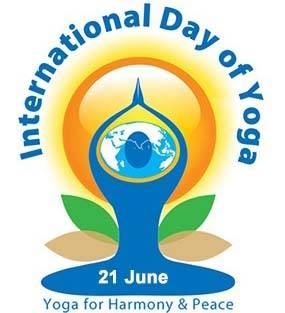 Walt Whitman: Did he experience Kundalini Shakti?
Walt Whitman: Did he experience Kundalini Shakti?
“If anything is sacred, the human body is sacred.”
Walt Whitman (1819-1892) was a poet, essayist, humanist, journalist, transcendentalist, and a yogi. He was influenced by Emerson and Thoreau in his philosophical outlook toward nature, life, his affinity to Vedanta and yogic experience. Whitman was clearly describing an experience of transcendence. He was considered as a poet of mysticism, cosmic consciousness, and religion. He describes his experience as follows:
Only in the perfect uncontamination and solitariness of individuality. . . . Only here, and on such terms, the meditation, the devout ecstasy, the soaring flight. Only here, communion with the mysteries. . . . The soul emerges, and all statements, churches, sermons, melt away like vapors. Alone, and silent thought and awe, and aspiration — and then the interior consciousness, like a hitherto unseen inscription, in magic ink, beams out its wondrous lines to the sense. Bibles may convey, and priests expound, but it is exclusively for the noiseless operation of one’s isolated self, to enter the pure ether of veneration, reach the divine levels, and commune with the unutterable.
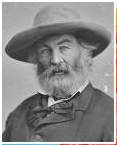 Whitman wrote: “There are divine things well enveloped, I swear to you there are divine things more beautiful than words can tell.” In many of his writings one would notice Whitman’s evolution to the awakening of the Self within and his glimpse of the One Spirit that pervades the universe. In order to achieve this kind of spirit he suggested that “re-examine all you have been told at school, or church or in any book, dismiss whatever insults your soul, and your very flesh shall be a great poem and have the richest fluency not only in its word but in the silent lines of its lips and face and between the lashes of your eyes and in every motion and joint of your body. “
Whitman wrote: “There are divine things well enveloped, I swear to you there are divine things more beautiful than words can tell.” In many of his writings one would notice Whitman’s evolution to the awakening of the Self within and his glimpse of the One Spirit that pervades the universe. In order to achieve this kind of spirit he suggested that “re-examine all you have been told at school, or church or in any book, dismiss whatever insults your soul, and your very flesh shall be a great poem and have the richest fluency not only in its word but in the silent lines of its lips and face and between the lashes of your eyes and in every motion and joint of your body. “
Whitman’s approach was holistic in the sense of establishing connectivity to everything that exists. Everything has a meaning and ever thing is connected. He wanted to remove all barriers to make visible the connectivity between body, spirit, and soul; change the mindset; know yourself through knowing others; focus on the present; and experience the moment. He admonishes his readers:
Whitman never set high value on a successful career or worldly aggrandizement; instead his aspiration had always been for the immortal. Looking back on his past life, he wrote in 1871:
- Walt Whitman is now 52 years old. No worldly aim has engrossed his life. He is still unmarried. None of the usual ardors of business ambition, of the acquisition of money, or the claims of society, pleasure, nor even the attractions of culture or art seemed to have enslaved him. The thought and the making of this work has spanned the whole horizon of his life, almost since boyhood. (Complete Works VI.I: 38)
Furthermore, Whitman's realization of the transcendental self-enabled him to overcome his inhibitions and helped the enlargement of his vision; the inversions of his sexual nature were transmuted into a spiritual passion for the mass of humanity.
Whitman has written extensively not only about his capacity to disassociate himself but also detaching himself from all surrounding activities so that he can extract thoughts and experiences of his own mind. V K Chari writes that “Whitman is conscious of a certain trance-like state leading to the suspension of the conscious intellect and accompanied by a strange feeling of exaltation and joy and a transformation, as it were, of the whole being; a state in which the mystic experiences a new awakening, the awakening of the spiritual vision, and, like the sage in the Upanishad, understands the being whose essence is joy. (Whitman in the Light of Vedantic Mysticism: An Interpretation; p: 104)
In that condition the whole body is elevated to a higher state consciousness. At this level there is more illumination both inside and outside, more serenity and purity. It is only through mental discipline and concentration; one can dive deep into the self. At that level duality is dissolved.
Sorrows and disappointments cease -- there is no more borrowing trouble in advance. A man realizes the venerable myth -- he is a god walking the earth, he sees new eligibilities, powers, and beauties everywhere; he himself has a new eyesight and hearing. The play of the body in motion takes a previously unknown grace. Merely to move is then a happiness, a pleasure -- to breathe, to see, is also. . . . All the beforehand gratifications, drink, spirits, coffee grease, stimulants, mixtures, late hours, luxuries, deeds of the night, seem as vexatious dreams, and how the awakening; -- many fall into their natural places, wholesome, conveying diviner joys. (Complete Writings, IV, 26-27.)
Whitman, however, sometimes insists that during this state of meditation the "senses are not lost or counteracted" but maintained intact:
a trance, yet with all the senses alert -- only a state of high exalted amusing -- the tangible and material with all its shows, the objective world suspended or surmounted for a while, and powers in exaltation, freedom, vision yet the senses not lost or counteracted. (Clifton Joseph Furness, Walt Whitman's Workshop (Cambridge: Harvard University Press, 1928), p. 21.
There is some evidence that Whitman underwent certain types of the experiences that are usually accompany the practice of Yoga. He may have used such terms as trance, consciousness, sensation, rapture, contemplation, and others. There is no question that he experienced a revolutionary transformation in his life. It may have happened when he was about 29 years old.
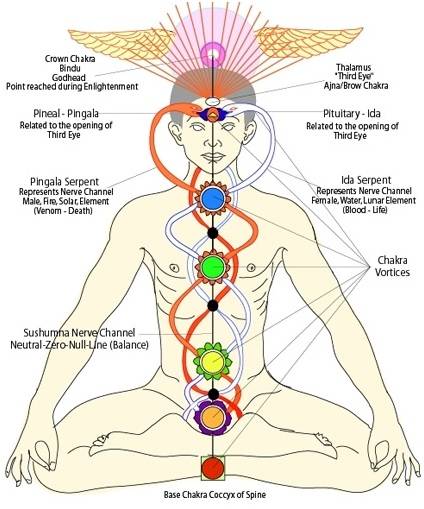 In fact, Geeta Khadka described a remarkable insight into the experiences of trance like status and consciousness as described by Whitman. In an article entitled “Song of Myself as Kundalini Yantra” she described as to how Whitman may have experienced the Kundalini Shakti. She divided the Song of Myself into different locations in the physical body to represent different chakras; Muladhara, Svadhisthana, Manipura, Anahata, Visuddha, Ajna and Sahasrara Chakra.
In fact, Geeta Khadka described a remarkable insight into the experiences of trance like status and consciousness as described by Whitman. In an article entitled “Song of Myself as Kundalini Yantra” she described as to how Whitman may have experienced the Kundalini Shakti. She divided the Song of Myself into different locations in the physical body to represent different chakras; Muladhara, Svadhisthana, Manipura, Anahata, Visuddha, Ajna and Sahasrara Chakra.
Sahasrara Chakra means thousand petalled lotus. Kundalini Shakti moves from the base chakra known as Muladhara to final chakra where one experiences tranquility, peace, joy, and wisdom. Arguments become irrelevant and nonsensical. At this stage one is released from the time and space and experience the true nature of oneself. The following passage would resemble that of transcendental illumination he may have experienced:
- Swiftly arose and spread around me the peace and knowledge that pass all the arguments argument of the earth,
- And I know that the hand of God is the promise of my own, and I
- know that the spirit of God is the brother of my own,
- And that all the men ever born are also my brothers, and the women my sisters and lovers,
- And that a keelson of creation is love.
This passage should not have been written by anyone who did not experience the kundalini power. Whitman’s experience is similar to that described by Gopi Krishna:
“Suddenly, with a roar like that of a waterfall, I felt a stream of liquid light entering my brain through the spinal cord . . .. I felt the point of consciousness that was myself growing wider, surrounded by the waves of light." (Higher Consciousness: The evolutionary thrust of Kundalini).
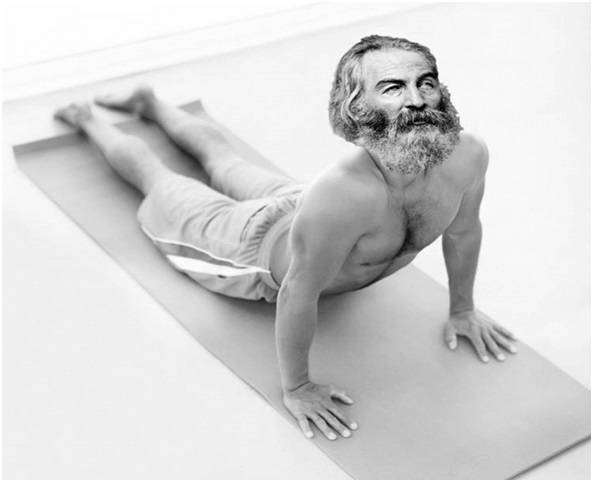 At this level, all barriers disappear, all duality dissolves, everything appears equally important and everything has relevance. Everything looks beautiful, serene, and sacred. Everything pulsates with energy.
At this level, all barriers disappear, all duality dissolves, everything appears equally important and everything has relevance. Everything looks beautiful, serene, and sacred. Everything pulsates with energy.
- I believe a leaf of grass is no less than the journey-work of the stars,
- And the pismire is equally perfect, and a grain of sand, and the egg of wren,
- And the tree-toad is a chef-d'oeuvre for the highest,
- And the running blackberry would adorn the parlours of heaven.
- Whitman recognizes the essential unity of matter and body, which find no opposition between the body and soul
- I am the poet of the body and I am the poet of the soul.
- I have said that the soul is not more than the body,
- And I have said that body is not more than the soul,
- And nothing, not God, is greater to one's self is.
Similarly, his poems “Passage to India” and “Leaves of Grass” reveal how much he was able to absorb and digest the essence of Vedanta philosophy with his transcendental experiences. He lived his life meaningfully without escaping from it. He thought one should outgrow from all the dilemmas; integrate the body, mind, and soul; experience the nature; and dissolve the dualities to enjoy the present moment. Let us appreciate the groundwork prepared by Emerson, Thoreau, and Whitman to introduce yoga and meditation to America and changing the landscape forever. Swami Vivekananda fortified Yoga by teaching about the philosophy behind yoga, need for the practice of yoga and necessity of developing spirituality to connect to the divine.
Swami Vivekananda (1863-1902)
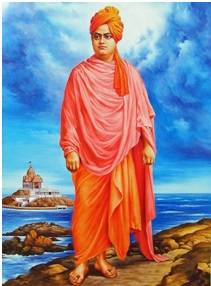 Swami Vivekananda visited USA in 1893 and by giving his momentous speeches and conducting his subsequent engagements, he is largely credited with introducing Hinduism and yoga to the Western world. We can only speculate what would have happened to the yoga movement if Vivekanand had not spoken at the Parliament of Religions. There, went on to decry "sectarianism, bigotry, and its horrible descendant fanaticism," which, he said, "have filled the earth with violence, drenched it often . . . with human blood, destroyed civilization, and sent whole nations to despair." Patience, tolerance, and knowledge based yoga should be established for peaceful living.
Swami Vivekananda visited USA in 1893 and by giving his momentous speeches and conducting his subsequent engagements, he is largely credited with introducing Hinduism and yoga to the Western world. We can only speculate what would have happened to the yoga movement if Vivekanand had not spoken at the Parliament of Religions. There, went on to decry "sectarianism, bigotry, and its horrible descendant fanaticism," which, he said, "have filled the earth with violence, drenched it often . . . with human blood, destroyed civilization, and sent whole nations to despair." Patience, tolerance, and knowledge based yoga should be established for peaceful living.
Vivekananda’s speeches centered on Raja yoga, the yoga of the mind, which is practiced through meditation and mental discipline. He believes that “Raja-Yoga is the science of religion, the rationale of all worship, all prayers, forms, ceremonies, and miracles.” The main purpose of yoga is to quiet the mind, and gain control over the mind. The practice of meditation with concentration will allow one to connect to the divine, understand the importance of uniting with the Supreme and liberate from the cycle of birth and death. In the Preface of Raja Yoga book, Swamiji said:“Raja-Yoga declares that each man is only a conduit for the infinite ocean of knowledge and power that lies behind mankind. It teaches that desires and wants are in man, that the power of supply is also in man; and that wherever and whenever a desire, a want, a prayer has been fulfilled, it was out of this infinite magazine that the supply came, and not from any supernatural being …”
 In his speeches he explained yoga as described in Patanjali Yoga Sutras:Yogahcittavrttinirodhah(“Yoga is the cessation of the fluctuations of the mind”). In Cambridge University he explained concisely the nature of Raja Yoga:
In his speeches he explained yoga as described in Patanjali Yoga Sutras:Yogahcittavrttinirodhah(“Yoga is the cessation of the fluctuations of the mind”). In Cambridge University he explained concisely the nature of Raja Yoga:
Yoga is the science by which we may stop Chitta from assuming or becoming transformed into, several faculties. As the reflection of the moon on the sea is broken or blurred by the waves, so is the reflection of the Atman, the true Self, broken by the mental waves. Only when the sea is stilled to mirrorlike calmness, can the reflection of the moon be seen, and only when the “mind-stuff,” the Chitta, is controlled to absolute calmness, is the Self to be recognized.”
Basically, he believed that is the stilling of changes in the states of mind. While comparing Hatha Yoga, he felt that it could give occult powers. But he maintained distance with Hatha Yoga by saying that these asanas are “nothing but a kind of gimmicks.” Later he even mentioned to his followers that, “We have nothing to do with it … because its practices are very difficult, and cannot be learned in a day and, after all, do not lead to much spiritual growth.” Thus, he concluded that kriya yoga (meditation based) is a safe, practical, and scientific way for Western people. Controlling the mind is essential to be successful to establish peace and patience to grow spiritually. Hence, he stated that, “The human mind is like that monkey, incessantly active by its own nature; then it becomes drunk with the wine of desire, thus increasing its turbulence. After desire takes possession comes the sting of the scorpion of jealousy at the success of others, and last of all the demon of pride enters the mind, making it think itself of all importance.”
He also spoke of the Eight Limbed Yogic Path, also described in the Sutras . The eight limbs include yamas (restraints), niyamas (observances), asana (postures), pranayama (breathing techniques), pratyahara (withdrawal of the senses), dharana (concentration), dhyana(meditation), and samadhi (absorption, unification with the whole). Vivekananda focused largely on the last three limbs and quite little on asana. (Yoga was far from the fitness craze it has morphed into in America today.) He also talked much about the need to do works of charity and service (Karma yoga), saying that meditation meant little without them. He talked about Yamas and Niyamas. He said that the first stage of Yoga is to master five things necessary to learn yoga. The first is Yama - non-killing, truthfulness, non-stealing, continence, and non-receiving of any gifts. Next is Niyama - cleanliness, contentment, austerity, study, and self-surrender to God.
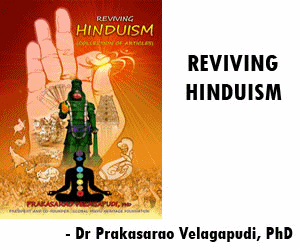 He talked about the Asana/ posture and why it’s necessary to fins a posture suitable for a person. Certain posture may be easier for one while s different one may be easier for another. He said that one thing necessary for the posture is to hold the spinal column free, sitting erect, holding the three parts - the chest, neck, and head - in a straight line. After one has learned to have a firm erect seat, one has to perform, according to certain schools, a practice called the purifying of the nerves. This part has been rejected by some as not belonging to Raja-Yoga, but as so great an authority as the commentator Shankaracharya advises it, I think fit that it should be mentioned, and I will quote his own directions from his commentary on the Svetashvatara Upanishad: "The mind whose dross has been cleared away by Pranayama, becomes fixed in Brahman; therefore Pranayama is declared. First the nerves are to be purified, then comes the power to practice Pranayama. Stopping the right nostril with the thumb, through the left nostril fill in air, according to capacity; then, without any interval, throw the air out through the right nostril, closing the left one. Again inhaling through the right nostril eject through the left, according to capacity; practicing this three or five times at four hours of the day, before dawn, during midday, in the evening, and at midnight, in fifteen days or a month purity of the nerves is attained; then begins Pranayama."
He talked about the Asana/ posture and why it’s necessary to fins a posture suitable for a person. Certain posture may be easier for one while s different one may be easier for another. He said that one thing necessary for the posture is to hold the spinal column free, sitting erect, holding the three parts - the chest, neck, and head - in a straight line. After one has learned to have a firm erect seat, one has to perform, according to certain schools, a practice called the purifying of the nerves. This part has been rejected by some as not belonging to Raja-Yoga, but as so great an authority as the commentator Shankaracharya advises it, I think fit that it should be mentioned, and I will quote his own directions from his commentary on the Svetashvatara Upanishad: "The mind whose dross has been cleared away by Pranayama, becomes fixed in Brahman; therefore Pranayama is declared. First the nerves are to be purified, then comes the power to practice Pranayama. Stopping the right nostril with the thumb, through the left nostril fill in air, according to capacity; then, without any interval, throw the air out through the right nostril, closing the left one. Again inhaling through the right nostril eject through the left, according to capacity; practicing this three or five times at four hours of the day, before dawn, during midday, in the evening, and at midnight, in fifteen days or a month purity of the nerves is attained; then begins Pranayama."
Vivekananda wanted to t spread the awareness that science and religion are do not contradict each other. They complement. Yoga established firm traction after Vivekananda’s lectures and the classes he conducted over the year in USA. David Gordon White “Yoga philosophy was for Vivekananda an ideal platform from which to assert the antiquity and superiority of Indian science over that of the West, of Hinduism over Christianity.”
Nineteenth Century has sowed the seeds to establish the ancient and scientific knowledge about Hinduism and the Yoga. Transcendentalists have played vital role in disseminating the Vedanta philosophy and even started practicing Yoga as taught by Lord Krishna to Arjuna and Upanishads. Then came Swami Vivekananda who solidified the concept, gave numerous lectures on Raja Yoga, taught Yoga to a number of Americans across the United States and left indelible mark on the American soil. The fact the that the whole world recognizing June 21st as an International Yoga day is a testimony to the acceptance and popularity of yoga where millions and millions yoga enthusiastic are reaping the physical and mental benefits.
NOTE: Please read Part - 1 of the article by clicking on the link below:











 Urgent support needed for Bangladesh Hindus
Urgent support needed for Bangladesh Hindus 







